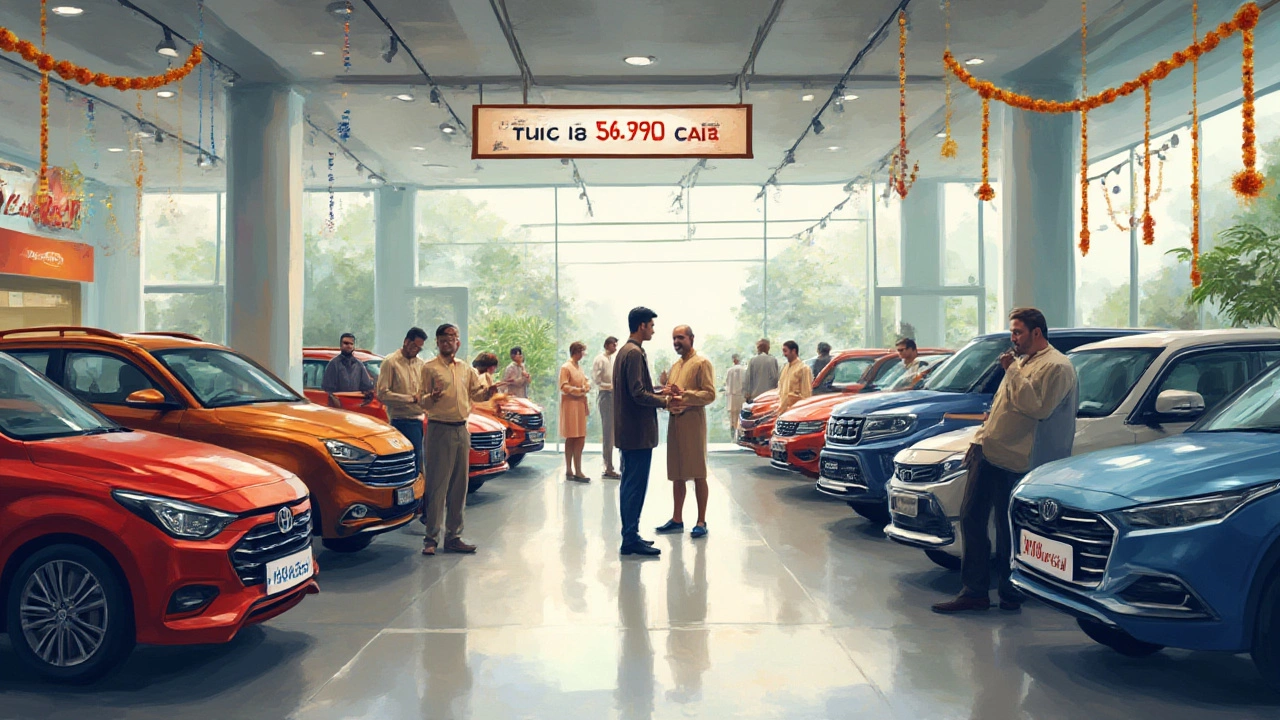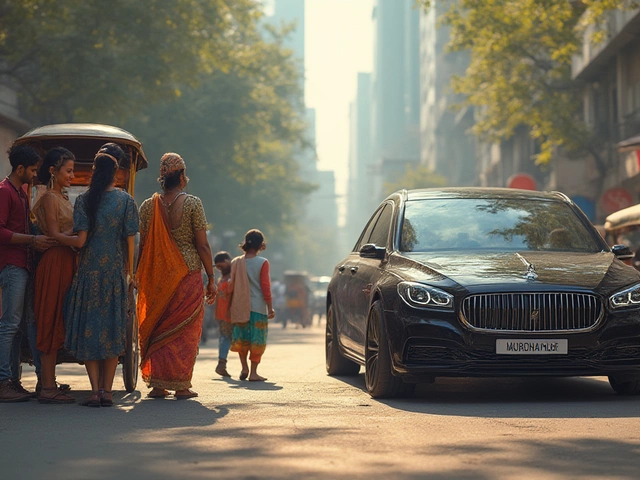Picture your dream car gliding down the streets of Mumbai or Bengaluru. Maybe it’s a Mustang, or a spiffy electric from Europe. The appeal is real—and so are the questions about your wallet. Stories float around about people bagging luxury wheels for a song abroad, then transporting them back home. Is it actually cheaper to import a car to India, or does the dream turn into a cash-guzzling headache? Time to break it down and see where your rupees go, step by step.
What Does It Really Cost to Import a Car to India?
On paper, importing a car to India looks simple. You buy your car overseas, ship it to an Indian port, and drive off into the sunset. But the government’s got other plans for your bank balance. The biggest wall you’ll hit? Import duties and taxes.
As of 2025, if you want to bring a car into India, get ready for the following costs stacked on top of your car’s price:
- Basic Customs Duty: A whopping 100% most of the time.
- Social Welfare Surcharge: 10% of the customs duty.
- IGST (Integrated GST): 28% in most cases.
- Compensation Cess: This can range between 1% to 22% depending on the engine size and type.
Math not your strong suit? Check this: If you buy a car for $30,000 (about Rs 25 lakh), the price practically triples by the time you’ve cleared these duties. That’s not even counting shipping, insurance for transport, registration, or handling at the port. According to the Central Board of Indirect Taxes and Customs (CBIC), "Imported cars can attract a total tax incidence up to 180% depending on category and specs." (Reference: CBIC Official Guidelines).
Here’s a snapshot of what you’d be paying for a $30k (Rs 25 lakh) car:
| Cost Element | Amount (₹) |
|---|---|
| Car Price | 25,00,000 |
| Customs Duty (100%) | 25,00,000 |
| Social Welfare Surcharge (10% of Duty) | 2,50,000 |
| IGST (28%) | 14,00,000 |
| Compensation Cess (15%) | 6,75,000 |
| Shipping & Insurance | 2,00,000 |
| Registration & Handling | 1,25,000 |
| Total | 76,50,000 |
This is a conservative estimate. For flashier rides, electric vehicles over 2,500cc, or SUVs, the taxes may reach even higher since India has all sorts of extra brackets for luxury models and large engines. It's wild how a car worth Rs 25 lakh can end up costing you nearly three times more after stepping onto Indian soil.
On top of these taxes and shipping fees, there’s also the headache of homologation—your car needs to meet Indian safety and emission standards unless you qualify for exemptions (like bringing a used car after living abroad for more than two years). If your car falls short, it’s another pile of paperwork—and cold, hard cash.
Heard stories about bringing a car as “personal effects” and dodging taxes? Not so fast. India’s rules shut most loopholes tight. If you’re moving back for good after living abroad for more than two years, you can import one used car, but you’ll still pay almost all the same duties. There are a few exemptions for diplomats or foreign embassies, but normal folks aren’t getting a free pass. That myth is busted.
Then you grapple with the hidden annoyances: transportation from the port to your city, agent and broker charges, possible bribes (let’s be honest, it happens), daunting paperwork, emissions testing, custom clearance delays, and even headaches with spare parts or service down the road. Suddenly, that flashy car can start to feel heavy in your wallet—and mind.

Why Do People Still Import Cars to India?
If it’s so expensive, you might wonder, why does anyone bother? First, some cars are simply not sold in India by official dealerships. Unique models, special limited editions, or left-hand-drive classics—true enthusiasts sometimes don’t care about import costs. For them, it’s about passion or owning something no one else has. And—let’s be honest—there’s a cool factor in rolling up in a car that doesn’t officially exist in Indian showrooms.
Some go the import route for high-end vehicles that cost as much or more if you buy them in India due to dealer markups or lack of localization. Yes, luxury automakers like Mercedes or BMW already manufacture and assemble some models in India, which slashes taxes. But certain trims, features (or even brands like Tesla’s Model Y Performance or a Shelby Mustang), might not be available officially. For those, import is the only way in.
Buying abroad can also mean picking up a used car in mint condition, often much newer than what you’d get on the Indian secondhand market. For Indian expats moving home, bringing their beloved ride with them can offer peace of mind and a slice of nostalgia.
Some tips from veteran importers:
- If you crave a right-hand drive, make sure to get the steering wheel configuration correct—India only permits right-hand drive cars, no exceptions.
- Don’t skimp on a customs-clearing agent with a solid reputation. The paperwork’s a nightmare otherwise and you risk your car getting stuck (sometimes for months) at the port.
- Keep every receipt and record handy. You’ll need these for registration, and missing paperwork can mean more fees or outright rejection.
- Watch out for scams. There are lots of middlemen making big promises; do your research and check for references.
- If you’re aiming for something rare or classic, check if it’s on India’s banned or restricted import lists—for some older cars or high-emission models, it's a hard no.
Here’s a cool data nugget: In 2023, India imported fewer than 1,200 personal vehicles under various categories, down from almost 5,000 a decade earlier (Ministry of Commerce data). Why the drop? Rising taxes, tougher emission rules, and a steady expansion of local luxury models has made imports less appealing except for the most hard-core gearheads or collectors.
Quote worth remembering:
“Owning an import says something about you, but it also tells the government to empty your wallet.” —Jatin Jain, Mumbai-based auto analyst
Most buyers crunch the numbers and decide it’s easier—and much, much cheaper—to buy locally or choose an Indian-assembled version of their favorite wheels.

Is It Ever Cheaper to Import Than to Buy in India?
Let’s get real. For the vast majority of people, importing a car into India is not the bargain it sounds like. Even with a weak rupee and high sticker prices at official showrooms, the mountain of taxes and fees wipes out any hope of a deal. The only exceptions might be mind-blowingly rare cars, models with unique customizations, or vehicles meant for collectors who don’t care about cost.
There are a few rare cases where an import might make sense:
- You’re an expat moving back to India with a car that qualifies for the transfer-of-residence rule (used car over a certain age, you’ve lived abroad for 2+ years). Even then, you’ll pay almost the entire duty stack, just with slightly reduced hassles.
- You’ve snagged a heavily discounted used car abroad—say, a 2-year-old Porsche—and are ready to swallow all costs for the bragging rights.
- You’re an NRI or HNI (High Net Worth Individual) wanting a unique, ultra-luxury car that isn’t available locally. For folks like this, cost is not the concern. It’s about exclusivity.
For most car buyers, especially middle-class dreamers, it usually makes sense to stay local. Indian versions might miss a few bells and whistles (like heated seats or advanced suspension), but prices, after-tax, are far less punishing. Local warranties, service networks, and better resale value also make a strong case for buying domestically.
If you’re shopping for something mainstream—a Toyota, Honda, Suzuki, or even some imported luxury brands—local dealers have done a decent job bringing models to Indian specs and price points. In many cases, the difference in price between an imported car and a locally assembled one can be more than double for no real benefit except a badge or slightly different trim.
Unexpected snags often hit after the sale. Getting spares for unpopular imports is a nightmare. Service support might be non-existent, so you’re left hunting for parts or specialists willing to work on your car. Plus, if you plan to resell, know that imported vehicles often fetch way less than their Indian-assembled twins, with buyers wary of parts, registration, and repair hassles.
Shoppers often Google for "import car India" thinking they'll find loopholes or clever workarounds. But the government has made it tough for a reason—it wants to protect local industries, curb luxury imports, and keep the balance of trade in check. Trying to cheat the system doesn’t work; stories about customs impounding brand-new cars for months show how risky it is to cut corners.
If the thrill of the chase is your thing and you’re ready for some major paperwork, expense, and patience, an imported car can turn heads and win some Instagram likes. For everyone else, your wallet is far happier buying or leasing from within India’s expanding auto market.
In the end, ask yourself: Would you rather pay for the fantasy or spend smart? Because with India’s car taxes, that "affordable" import can become the most expensive set of wheels you’ve ever owned.





Write a comment